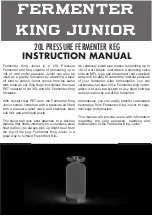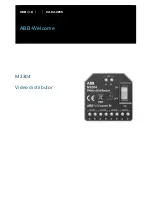
Chapter 4
Preliminary Operating Considerations
4–6
Channel Cut–Off Frequency
The channel filter frequency selection determines a channel’s cut–off
frequency, also called the –3 dB frequency. The cut–off frequency is defined
as the point on the input channel frequency response curve where frequency
components of the input signal are passed with 3 dB of attenuation. All
frequency components at or below the cut–off frequency are passed by the
digital filter with less than 3 dB of attenuation. All frequency components
above the cut–off frequency are increasingly attenuated, as shown in the
following figures.
The cut–off frequency for each input channel is defined by its filter
frequency selection. Table 4.A shows the input channel cut–off frequency
for each filter frequency. Choose a filter frequency so that your fastest
changing signal is below that of the filter’s cut–off frequency. The cut–off
frequency should not be confused with update time. The cut–off frequency
relates how the digital filter attenuates frequency components of the input
signal. The update time defines the rate at which an input channel is scanned
and its channel data word updated. See page 4–9 for determining the
channel update time.
AB Spares
Summary of Contents for SLC 500 1746-NR4
Page 1: ...User Manual SLC 500t RTD Resistance Input Module Cat No 1746 NR4 Allen Bradley AB Spares ...
Page 15: ...Preface P 8 Notes AB Spares ...
Page 37: ...Chapter 2 Quick Start 2 12 Notes AB Spares ...
Page 63: ...Chapter 4 Preliminary Operating Considerations 4 12 Notes AB Spares ...
Page 87: ...Chapter 5 Channel Configuration Data and Status 5 24 Notes AB Spares ...
Page 107: ...Chapter 7 Module Diagnostics and Troubleshooting 7 8 Notes AB Spares ...
Page 117: ...Chapter 8 Application Examples 8 10 Notes AB Spares ...
Page 123: ...Appendix A Specifications A 6 Notes AB Spares ...
Page 125: ...Appendix B RTD Standards B 2 Notes AB Spares ...
















































